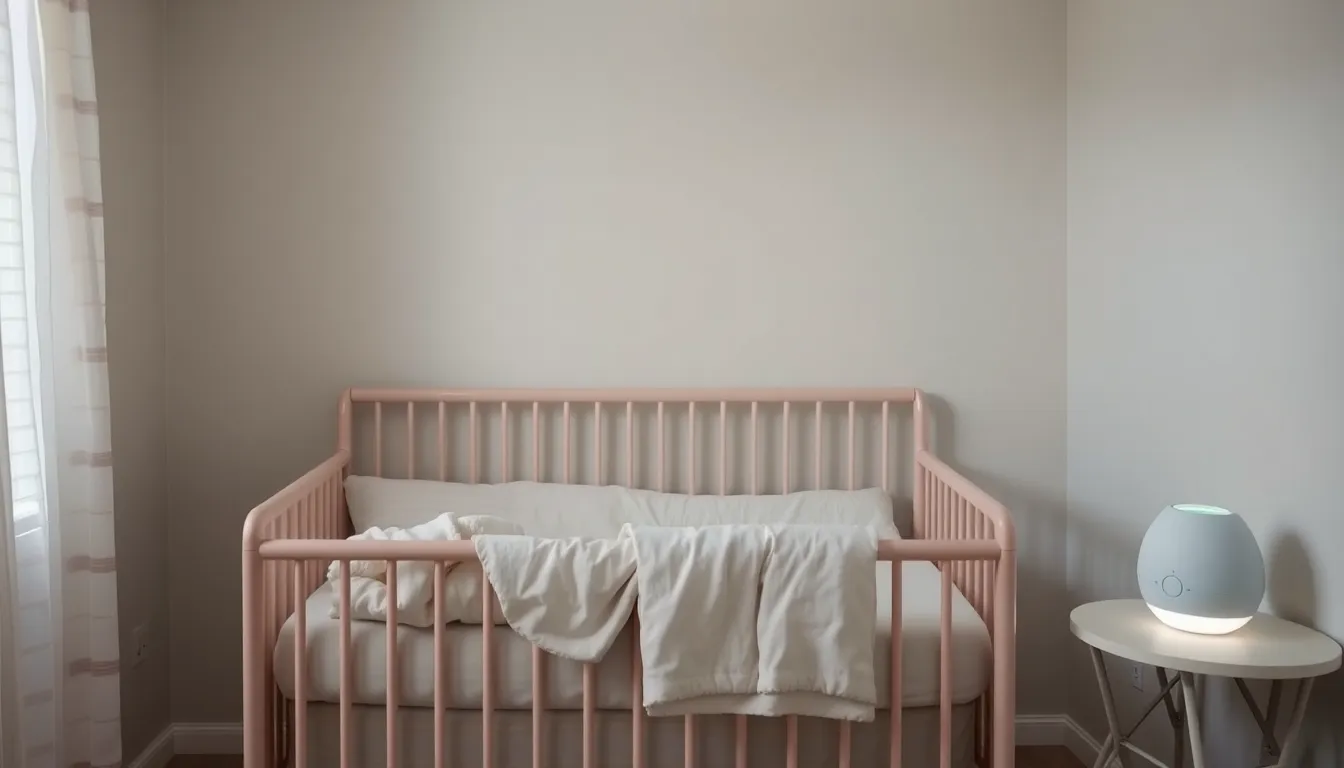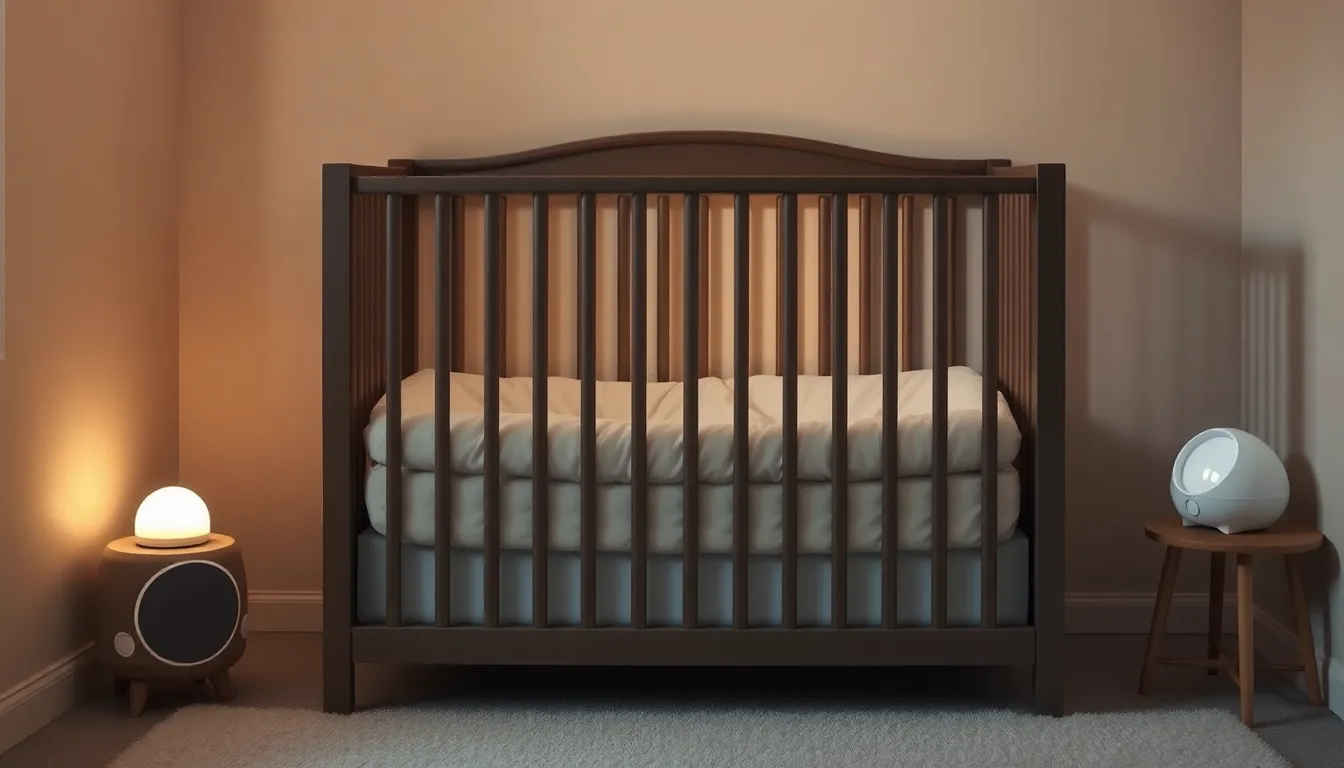Navigating the world of infant sleep can feel overwhelming for new parents. With their tiny bodies and developing routines, babies often have unpredictable sleep patterns that leave caregivers feeling exhausted. Understanding the nuances of infant sleep is crucial for promoting healthy habits that benefit both baby and parent.
Establishing a consistent sleep routine can make a world of difference. Simple strategies can help infants settle down more easily and sleep longer, allowing everyone in the household to enjoy more restful nights. From creating a calming bedtime environment to recognizing sleep cues, these tips will empower parents to foster better sleep habits in their little ones.
Table of Contents
ToggleUnderstanding Infant Sleep Patterns
Infant sleep patterns differ significantly from those of adults. Recognizing these differences helps parents support their baby’s sleep needs effectively.
Importance of Sleep for Infants
Sleep plays a crucial role in an infant’s growth and development. During sleep, the body releases growth hormones essential for physical development. Quality sleep supports brain development by facilitating memory consolidation and enhancing learning abilities. Infants typically require 14 to 17 hours of sleep daily, depending on their age. Establishing healthy sleep patterns promotes emotional well-being and can lead to better behavior in later childhood.
Common Sleep Challenges
Parents often encounter several common sleep challenges with infants:
- Frequent awakenings: Newborns naturally wake every few hours to feed, disrupting longer sleep stretches.
- Nighttime fussiness: Babies may experience fussiness caused by discomfort from gas or teething.
- Day-night confusion: Infants may struggle to differentiate between day and night, affecting their sleeping habits.
- Overstimulation: Exposure to excessive noise, bright lights, or active environments can prevent infants from settling down.
- Sleep regressions: Developmental milestones can temporarily disrupt sleep patterns, leading to short-term changes in sleep behavior.
Understanding these challenges equips parents with the knowledge to assist their infants in developing healthier sleep habits.
Essential Infant Sleep Tips


Establishing effective sleep habits benefits both infants and parents. Implementing consistent strategies can promote longer and more restful sleep periods.
Establishing a Consistent Sleep Routine
Creating a consistent sleep routine fosters a sense of security for infants. Incorporate activities that signal bedtime, such as bathing, reading, or gentle rocking. Aim for the same bedtime each day to regulate the baby’s internal clock. Gradually introduce the routine by starting with short time frames, and extend the duration as the infant becomes acclimated. Make adjustments based on the baby’s responses to ensure comfort and ease during the transition.
Creating a Suitable Sleep Environment
A suitable sleep environment promotes relaxation and encourages longer sleep durations. Dim the lights to create a calming atmosphere and use white noise machines to mask sudden sounds. Ensure the crib or bassinet meets safety standards, placing the infant on their back to reduce the risk of Sudden Infant Death Syndrome (SIDS). Maintain a comfortable room temperature, ideally between 68°F and 72°F. Limit stimulation in the sleep area, reserving the crib solely for sleep, which associates the space with rest.
Soothing Techniques for Better Sleep
Implementing soothing techniques can significantly enhance an infant’s sleep quality. These methods create a calming environment that promotes relaxation and minimizes disturbances.
Swaddling and Its Benefits
Swaddling involves wrapping an infant snugly in a blanket, mimicking the womb’s secure feeling. This technique has several benefits:
- Reduced Startle Reflex: Swaddling decreases the startle reflex, which can wake a sleeping baby.
- Enhanced Comfort: A snug wrap provides comfort, helping infants feel secure and calm.
- Improved Sleep Duration: Babies tend to sleep longer when swaddled due to reduced disturbances.
- Safety Considerations: Always ensure that swaddling allows for hip movement and does not cause overheating. Use breathable materials to promote airflow.
The Role of White Noise
White noise machines produce a consistent sound that masks other noises, creating a soothing auditory environment. Key advantages include:
- Sleep Association: Infants associate white noise with sleep, helping them fall asleep faster.
- Continuous Sound: The constant sound can prevent sudden interruptions from external noises.
- Familiar Environment: Mimicking the sounds of the womb, white noise creates a familiar atmosphere for newborns.
- Adjustable Volume: Keep the volume at a safe level, ensuring it is not too loud, which could harm an infant’s hearing.
Incorporating these techniques can help infants achieve better sleep, benefiting both the baby and parents.
Safe Sleep Practices
Safe sleep practices are essential for reducing the risk of sleep-related incidents in infants. Following established guidelines promotes a secure sleep environment and supports healthy sleep habits.
Understanding Safe Sleep Guidelines
Adhering to safe sleep guidelines minimizes the risk of Sudden Infant Death Syndrome (SIDS). Key recommendations include placing infants on their backs for every sleep, utilizing a firm mattress without soft bedding, and keeping the sleep area free from toys, pillows, and loose blankets. Babies should sleep in their own crib or bassinet, ideally in the same room as their parents for at least the first six months. Maintaining a smoke-free environment significantly contributes to a safer sleep space.
Avoiding Common Sleep Hazards
Identifying and mitigating common sleep hazards enhances infant safety. Avoid co-sleeping with infants on soft surfaces such as sofas or armchairs; these present risks for suffocation. Parents should also ensure the crib meets safety standards, with slats spaced no more than 2 3/8 inches apart and no drop-side cribs. Maintaining a comfortable room temperature discourages overheating, which is linked to an increased risk of SIDS. Staying mindful of parental fatigue and ensuring the baby is put to sleep safely contribute to a secure sleep routine.
Establishing healthy sleep habits for infants is essential for their growth and development. By implementing a consistent sleep routine and creating a calming environment, parents can significantly enhance their baby’s sleep quality. Recognizing sleep cues and understanding the unique patterns of infant sleep can make a world of difference in managing nighttime challenges.
Incorporating soothing techniques and adhering to safe sleep practices not only promotes better sleep but also ensures a secure environment for the baby. With patience and persistence, parents can navigate the complexities of infant sleep, fostering a peaceful atmosphere that benefits the entire family.








